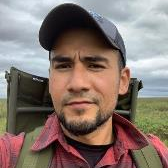Dynamic Disturbance Processes in Permafrost Regions
A special issue of Remote Sensing (ISSN 2072-4292). This special issue belongs to the section "Biogeosciences Remote Sensing".
Deadline for manuscript submissions: closed (15 May 2022) | Viewed by 41265
Special Issue Editors
Interests: multi/hyperspectral image analysis/classification; land cover change processes; permafrost disturbances; carbon/nitrogen cycling; machine learning and big data applications
Special Issue Information
Dear Colleagues,
Permafrost regions are in transition. Dynamic disturbances such as wildfire and permafrost degradation are restructuring the spatial and temporal distribution of snow, water, vegetation, soil carbon/nutrients, and energy dynamics, with implications for local to global feedbacks. The interdependence of these disturbances makes quantifying their impact challenging, yet paramount for improving our predictive capacity as climate change and disturbance regimes intensify.
In this Special Issue, we aim to advance knowledge of dynamic disturbance processes that impact high-latitude permafrost ecosystems. We welcome submissions on the application of remote sensing to a broad range of disturbances: (1) Thermokarst (vertical surface subsidence) and thermoerosion (lateral transport of sediments via ground ice melt), (2) thermokarst lake dynamics, (3) coastal and fluvial erosion, (4) wildfire–ecosystem interactions, (5) permafrost vegetation interactions, and (6) anthropogenic disturbances. We particularly encourage applications linking two interacting components that influence periglacial ecosystem dynamics (e.g., wildfire and vegetation; thermokarst and hydrology; climate and thermokarst).
Prof. Dr. Mark J. LaraDr. Simon Zwieback
Guest Editors
Manuscript Submission Information
Manuscripts should be submitted online at www.mdpi.com by registering and logging in to this website. Once you are registered, click here to go to the submission form. Manuscripts can be submitted until the deadline. All submissions that pass pre-check are peer-reviewed. Accepted papers will be published continuously in the journal (as soon as accepted) and will be listed together on the special issue website. Research articles, review articles as well as short communications are invited. For planned papers, a title and short abstract (about 100 words) can be sent to the Editorial Office for announcement on this website.
Submitted manuscripts should not have been published previously, nor be under consideration for publication elsewhere (except conference proceedings papers). All manuscripts are thoroughly refereed through a single-blind peer-review process. A guide for authors and other relevant information for submission of manuscripts is available on the Instructions for Authors page. Remote Sensing is an international peer-reviewed open access semimonthly journal published by MDPI.
Please visit the Instructions for Authors page before submitting a manuscript. The Article Processing Charge (APC) for publication in this open access journal is 2700 CHF (Swiss Francs). Submitted papers should be well formatted and use good English. Authors may use MDPI's English editing service prior to publication or during author revisions.
Keywords
- Climate change
- Thermokarst
- Thermoerosion
- Wildfire
- Coastal erosion
- Shrub expansion
- Disturbance
Benefits of Publishing in a Special Issue
- Ease of navigation: Grouping papers by topic helps scholars navigate broad scope journals more efficiently.
- Greater discoverability: Special Issues support the reach and impact of scientific research. Articles in Special Issues are more discoverable and cited more frequently.
- Expansion of research network: Special Issues facilitate connections among authors, fostering scientific collaborations.
- External promotion: Articles in Special Issues are often promoted through the journal's social media, increasing their visibility.
- e-Book format: Special Issues with more than 10 articles can be published as dedicated e-books, ensuring wide and rapid dissemination.
Further information on MDPI's Special Issue polices can be found here.






